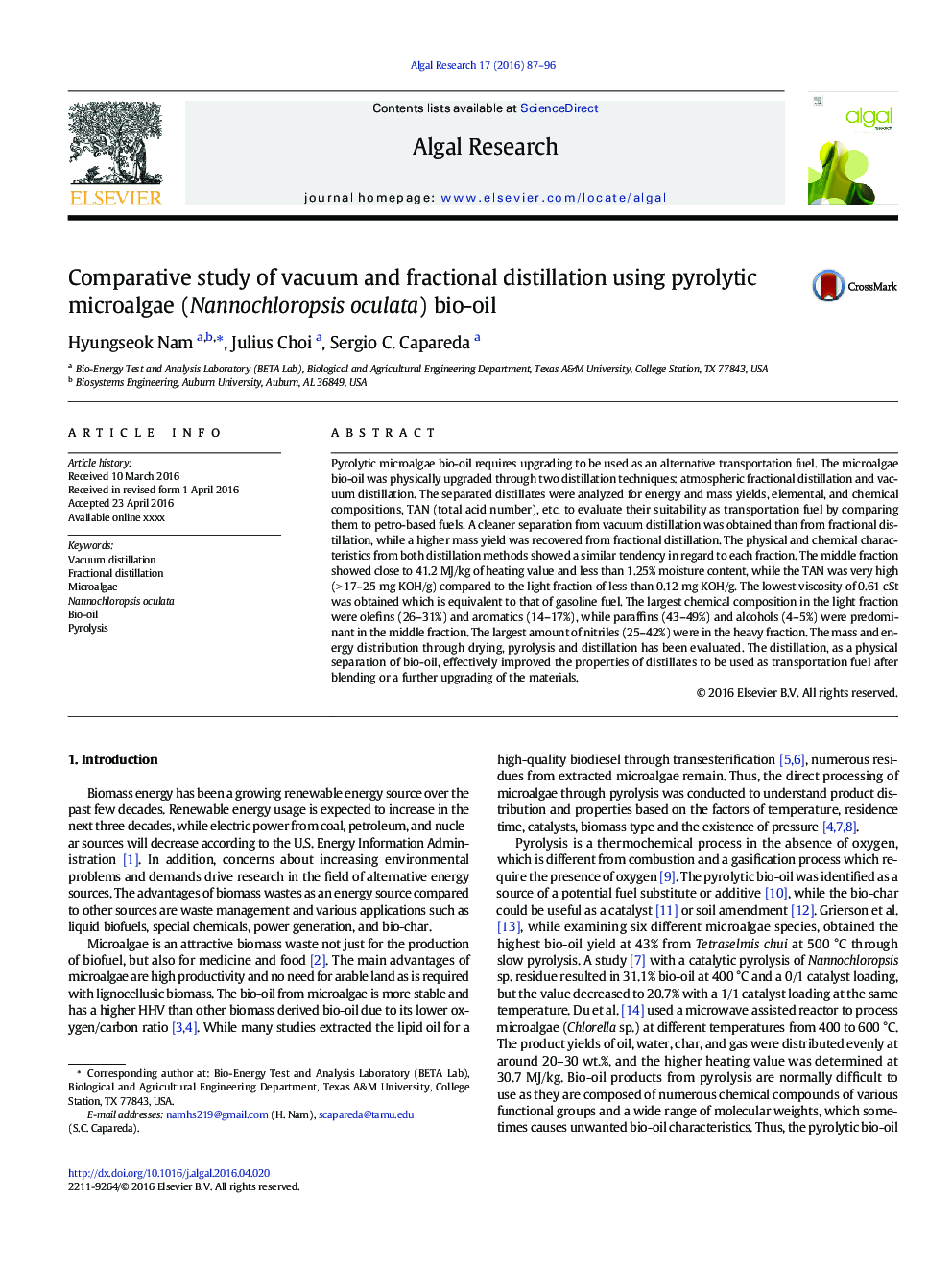| Article ID | Journal | Published Year | Pages | File Type |
|---|---|---|---|---|
| 8086903 | Algal Research | 2016 | 10 Pages |
Abstract
Pyrolytic microalgae bio-oil requires upgrading to be used as an alternative transportation fuel. The microalgae bio-oil was physically upgraded through two distillation techniques: atmospheric fractional distillation and vacuum distillation. The separated distillates were analyzed for energy and mass yields, elemental, and chemical compositions, TAN (total acid number), etc. to evaluate their suitability as transportation fuel by comparing them to petro-based fuels. A cleaner separation from vacuum distillation was obtained than from fractional distillation, while a higher mass yield was recovered from fractional distillation. The physical and chemical characteristics from both distillation methods showed a similar tendency in regard to each fraction. The middle fraction showed close to 41.2 MJ/kg of heating value and less than 1.25% moisture content, while the TAN was very high (> 17-25 mg KOH/g) compared to the light fraction of less than 0.12 mg KOH/g. The lowest viscosity of 0.61 cSt was obtained which is equivalent to that of gasoline fuel. The largest chemical composition in the light fraction were olefins (26-31%) and aromatics (14-17%), while paraffins (43-49%) and alcohols (4-5%) were predominant in the middle fraction. The largest amount of nitriles (25-42%) were in the heavy fraction. The mass and energy distribution through drying, pyrolysis and distillation has been evaluated. The distillation, as a physical separation of bio-oil, effectively improved the properties of distillates to be used as transportation fuel after blending or a further upgrading of the materials.
Keywords
Related Topics
Physical Sciences and Engineering
Energy
Renewable Energy, Sustainability and the Environment
Authors
Hyungseok Nam, Julius Choi, Sergio C. Capareda,
